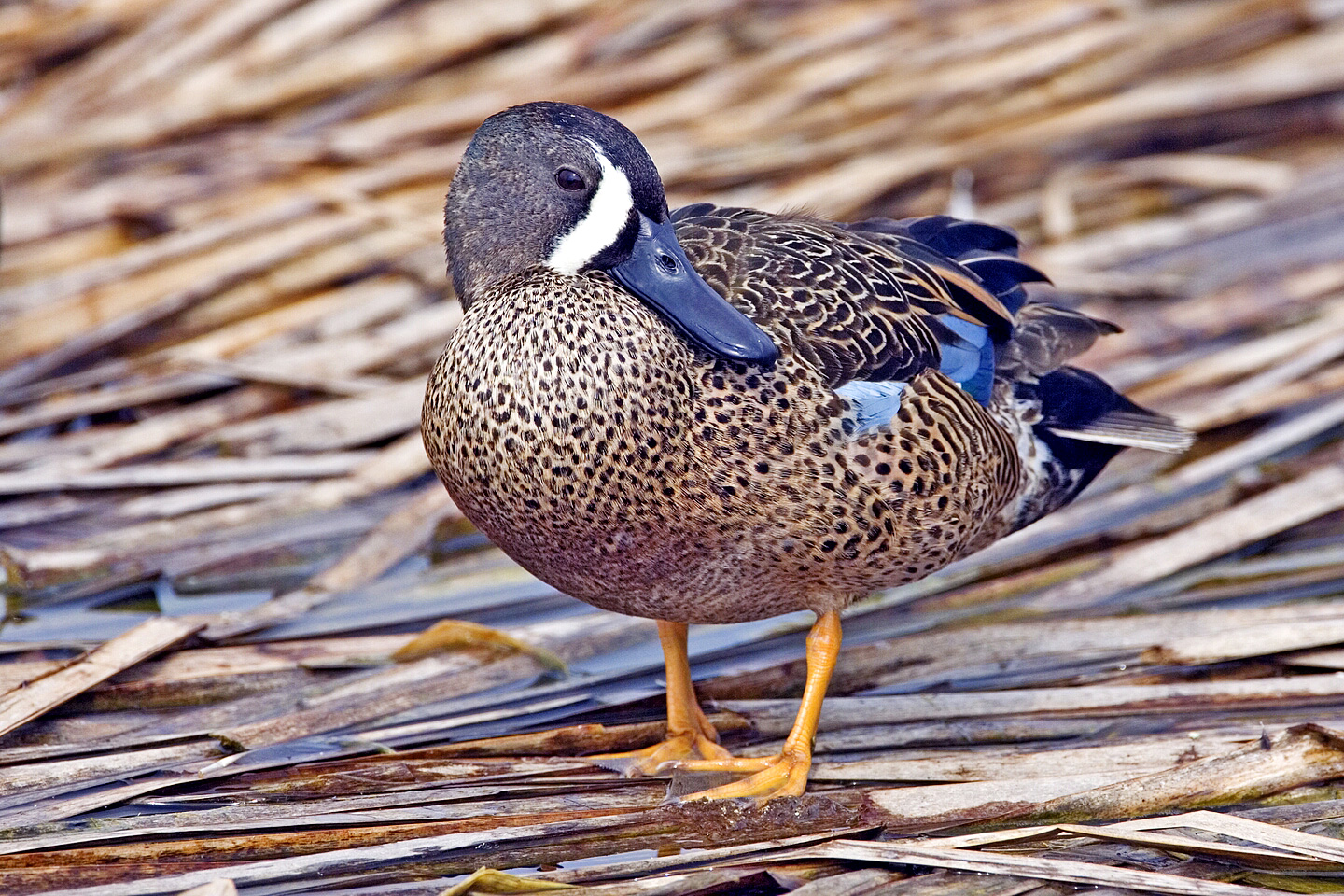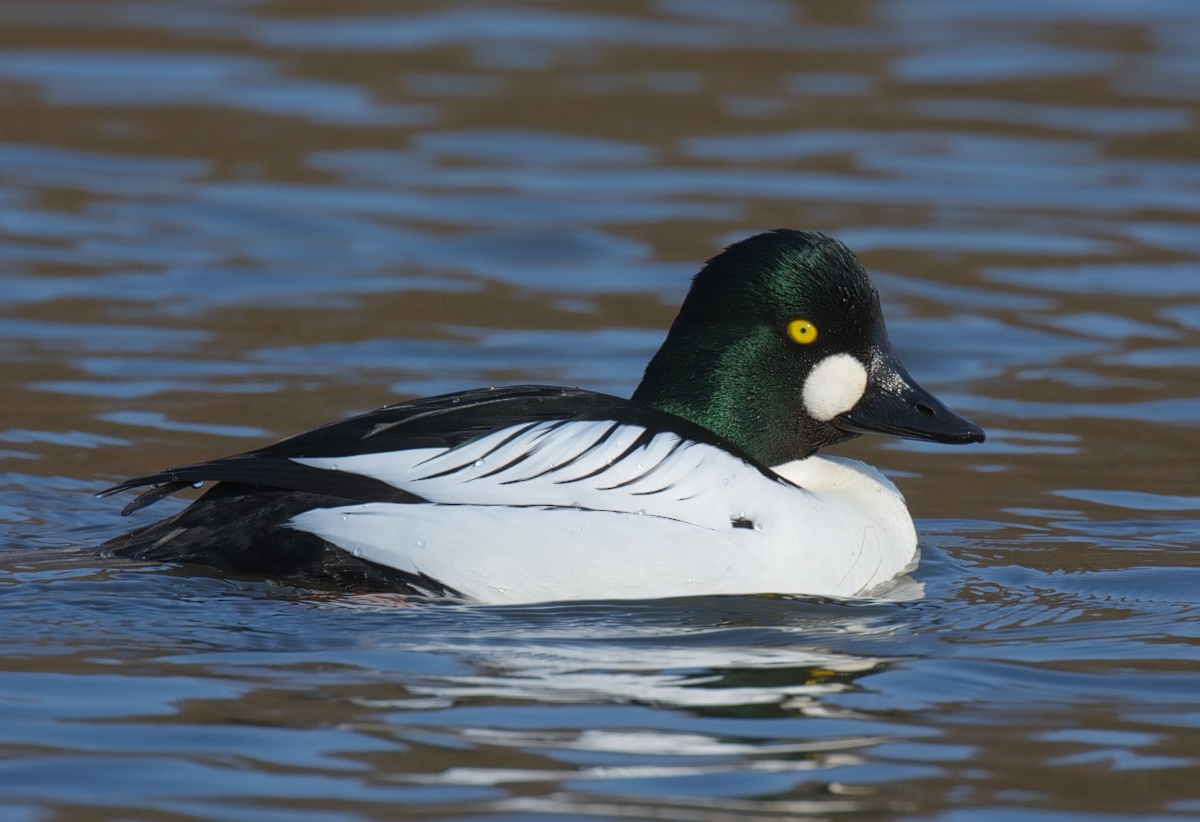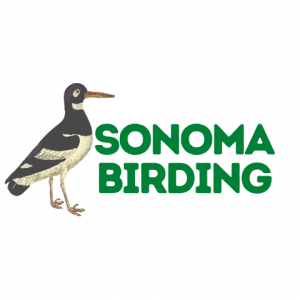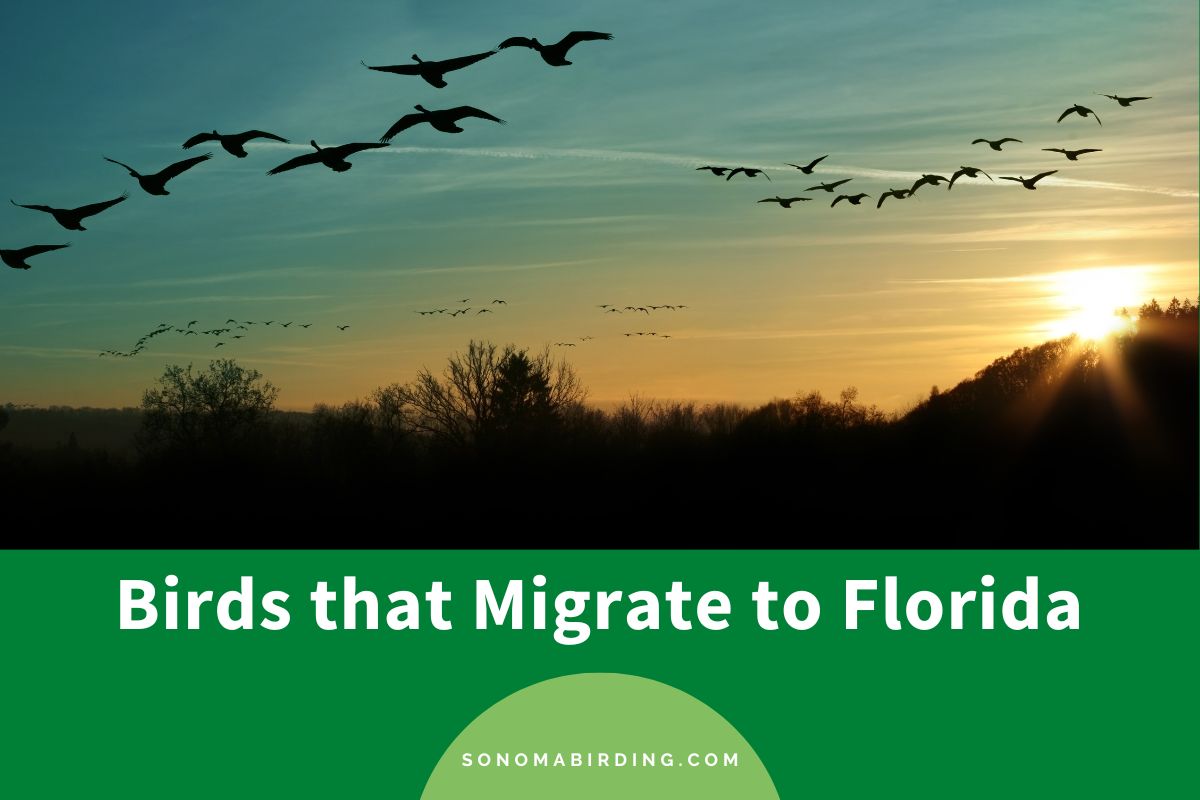It’s probably not a surprise that many birds migrate as seasons change to avoid extreme weather, whether it’s the heat or the cold. Since Florida has a relatively humid and tropical climate system surrounded by water, it’s understandable that many bird species migrate there during the winter. In this article, we’ll be taking a look at several bird species that migrate to Florida during the winter.
1. Northern Pintail
Scientific Name: Anas acuta
Range: Eurasia, North America, Central America
The northern pintail is a slender duck that consists of a long neck, long tail, white breast, a mostly gray body, a dark brown head with a white slash up the neck (for males), and light brown plumage (for females).
Their usual habitats consist of wetlands and fields, specifically agricultural waste grains. Their diet consists of seeds from aquatic plants, worms, snails, crustaceans, a variety of grains, and aquatic insects.
2. Greater Scaup
Scientific Name: Aythya marila
Range: North America, Europe, Japan, Eastern Siberia
The greater scaup is a diving duck with a noticeable round head. Males consist of black breasts, medium gray backs, white sides, and yellow eyes. Their head appears iridescent under good lighting. Females are browner overall and are grayer on the body during the winter.
They typically prefer saltwater bays and coves but will occasionally visit freshwater areas. Their diet consists of aquatic invertebrates, insects, crustaceans, aquatic plants, and seeds.
3. Red-Breasted Merganser
Scientific Name: Anas acuta
Range: Eurasia, North America, Central America
The red-breasted merganser is a long duck with a thin, dull red bill, shaggy crest, a dark green head with brown breast and gray sides (for males), and a brown head and gray body (for females and juveniles).
They are found in both freshwater environments, such as lakes, and saltwater environments, such as along the Pacific and Atlantic coasts. Their diet consists mainly of small fish, crustaceans, and insects, with occasional tadpoles.
4. Northern Shoveler
Scientific Name: Spatula clypeata
Range: Eurasia, North America, Central America
The northern shoveler is a medium-sized duck that consists of a large, spoon-shaped bill, a dark green head, white breast, chestnut-colored sides, and belly (for males), buffy-brown plumage, and a large bill (for females).
They prefer shallow wetlands with submerged vegetation during the breeding season and habitats ranging from salt marshes, lakes, and ponds during the non-breeding season. Their typical diet consists of small crustaceans, aquatic invertebrates, and seeds.
5. Redhead

Scientific Name: Aythya Americana
Range: North and Central America
The redhead is a diving duck that, for males, consists of a cinnamon-colored head, yellow eyes, and a gray body, and for females, a plain brown overall plumage. Both have an evenly rounded head.
They breed mainly in marshy freshwater ponds and lakes, while they can be found in flocks at any body of water when not breeding.
They feed mainly on plants, including leaves, stems, seeds, and roots, throughout most of the year. During the summer, they feed mainly on aquatic insects, mollusks, and occasionally small fish.
6. Ring-Necked Duck
Scientific Name: Aythya collaris
Range: North and Central America
The ring-necked duck is a small diving duck with a tall crown, a white band near the tip of the gray bill, and a white wing stripe in flight. Males consist of an iridescent black head and back, gray sides, and a white spur on the sides, while the females consist of a gray-brown plumage with pal patches at the base of the bill.
Their habitats include areas with small bodies of water, such as near beaver ponds or cattail marshes. They mainly feed on aquatic plants and insects, though their diet changes based on the season and habitat.
7. Blue-Winged Teal

Scientific Name: Spatula discors
Range: North and Central America, Iceland, Northwest Europe, Colombia, Venezuela
The blue-winged teal is a small duck with blue patches on the upper wing that are visible during flight. Breeding males have a bold white crescent in the front of the eyes and spotted sides, while females have an overall brown, distinctively patterned plumage.
Their usual habitats include shallow wetlands and marshes, where they can often be found in flocks.
Their diet typically consists of seeds and other plant material from grasses, sedges, pondweeds, et cetera. Depending on the season, they may consume snails, clams, mollusks, insects, crustaceans, and other aquatic animals.
8. American Wigeon

Scientific Name: Mareca americana
Range: North and Central America, Northwest Europe
The American wigeon is a duck with bright white underwings in flight (though this can be difficult to tell from a distance), a white blaze and wide green slash behind the eye for breeding males, and plain brown plumage with rusty sides for females.
These wigeons prefer lakes and wetlands, where they’re often seen in flocks grazing in fields. Their diet consists of both land and aquatic plants, in which they’ll consume both the stems and leaves of the plants.
9. Green-winged Teal

Scientific Name: Anas crecca
Range: North and Central America, Europe, Middle East, Asia
The green-winged teal is a small duck with a narrow and thin bill. Males have a brown head with a green stroke by the eye, creamy-colored breast, and an overall gray body, while females have a darker brown plumage.
Their habitat consists mainly of marshes, rivers, and bays. The exact location depends on the season, as during the summer, they can be seen more in freshwater lakes and marshes, while during the winter, they’re found more often in coastal estuaries and tidal marshes.
Their diet comprises seeds (from grass, sedges, and other aquatic plants) and aquatic insects such as crustaceans and mollusks.
10. Gadwall
Scientific Name: Mareca strepera
Range: North America, Mexico, Europe, Asia
The gadwall is a large duck with a gray body, black rear, and puffy head (for males), a thin bill, and a plain face (for females). Both have a small white wing patch that can be noticed in flight.
Their preferred habitats include wetlands, ponds, or bays, where the water is shallow and where you can often see them in either pairs or small flocks.
Gadwalls mostly feed on aquatic plants, where they’ll consume the leaves and stems of plants. Occasionally, they’ll prey on mollusks, insects, crustaceans, and fish.
11. Hooded Merganser

Scientific Name: Lophodytes cucullatus
Range: North America
The hooded merganser is a small diving duck consisting of a black and white crest, black stripes on a white breast, cinnamon-colored sides (for males), a puffy crest, and a yellow bill (for females). Both have a thin serrated bill and appear long and slender during flight.
They typically reside near small ponds, marshes, and wooded swamps. Their diet typically consists of small fish, crayfish, mollusks, tadpoles, and other crustaceans and aquatic insects. They also consume a small amount of plant material.
12. Wood Duck

Scientific Name: Aix sponsa
Range: North America, Occasionally in Mexico, Western Europe
The wood duck is a species of duck that shows clear sexual dimorphism in that the breeding males are a mix of bright colors and patterns (while appearing dark from a distance), and females are of a gray-brown plumage throughout with white eyering. Both have a crest on the head.
Their preferred habitats include wetlands and flooded woods. Their diet usually consists of seeds, nuts, and plant matter, with the occasional aquatic and land invertebrates.
13. Ruddy Duck
Scientific Name: Oxyura jamaicensis
Range: North and Central America, Western Europe
The ruddy duck is a small duck with a long tail shaped like a fan. Breeding males consist of a chestnut-colored body, a black cap, white cheeks, and a baby-blue bill, while winter males have a brown-colored cap, ad white cheeks. The females and juveniles are both brown and have a dark cap and line through the cheek.
They’re often seen in marshes, ponds, lakes, and, in the winter, salt bays.
Their diet consists mainly of seeds and roots of aquatic plants such as pondweeds, sedges, smartweeds, and grasses. They also consume aquatic insects, mollusks, and crustaceans on occasion.
14. Lesser Scaup
Scientific Name: Aythya affinis
Range: North and Central America, Northern South America
The lesser scaup is a peak-headed duck that, for males, consists of a black breast, gray back, whitish gray sides, yellow eyes, and head that appears black with iridescence in good light, and for females, brown plumage overall with a white patch at the base of the bill and yellow eyes.
Similar in appearance to the previously described greater scaup, but with a peaked head, slimmer cheeks, less of a white stripe on the wing, and a smaller, narrower bill.
Their preferred habitats include wetlands, ponds, lakes, and bays.
Though their diet varies with the season and habitat, it typically includes animal matter such as mollusks, aquatic insects, and crustaceans. Plant material, such as the stems, leaves, and seeds of sea lettuce and pondweeds, is also on the menu.
15. Common Goldeneye

Scientific Name: Bucephala clangula
Range: North America, Asia, Europe
The common goldeneye is a medium-sized duck that, for males, consists a black head with a white patch at the base of the bill and a white plumaged body with occasional black spots, and for females, a gray plumaged body and a chocolate brown head. Both have bright yellow eyes that make them easy to spot.
Their habitats consist of wetlands such as lakes, ponds, marshes, inland lakes, rivers, coastal bays, and nearshore waters.
Their diet consists of small aquatic animals such as crabs, crayfish, snails, clams, and insects, with the occasional small fish and vegetation.
16. Bufflehead

Scientific Name: Bucephala albeola
Range: North America, Mexico
The bufflehead is a small diving duck that has a large head and a small gray bill. Breeding males have black and white plumage with a large white patch on the back of the head, and females are of gray-brown plumage with a white patch on the cheek.
Their preferred habitats include bays, estuaries, reservoirs, and lakes in the winter. Their diet varies with the season and habitat, in which they’ll feed mainly on aquatic insects in the summer in fresh water, mollusks (particularly snails) during the winter, and small bits of plants in the fall.
17. Canvasback
Scientific Name: Aythya valisineria
Range: North America, Mexico
The canvasback is an elegant duck consisting of a distinctive triangular head and a forehead that flows into the long bill. The males have white plumage with a black chest, a reddish-brown head, and red eyes, while the females have grayish-brown plumage with dark brown eyes.
Their preferred habitats include lakes, marshes, or any large body of water with aquatic vegetation.
They feed mainly on seeds, plant tubers, mussels, and insects while restricting themselves to plants’ rhizomes and tubers during the winter.
Conclusion
As you can probably tell from this article, almost every bird we’ve gone over is aquatic and prefer feeding on fish and other aquatic plants and insects.
As such, you’ll probably also notice that most of them don’t have habitats near the equator since those areas are typically both hot and dry, hence making it near impossible for them to feed or breed.
As long as you aren’t located in those areas, there’s a high chance you’ll encounter one of these birds the next time you come across a lake or pond.
Related articles:
14 Common Backyard Birds in Miami to Delight Your Senses










